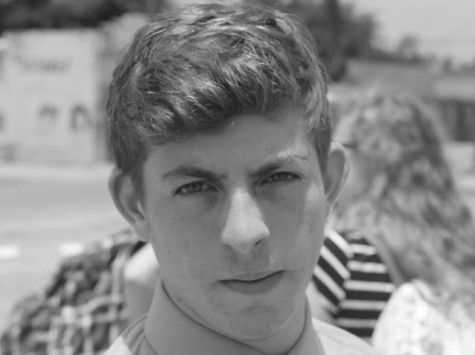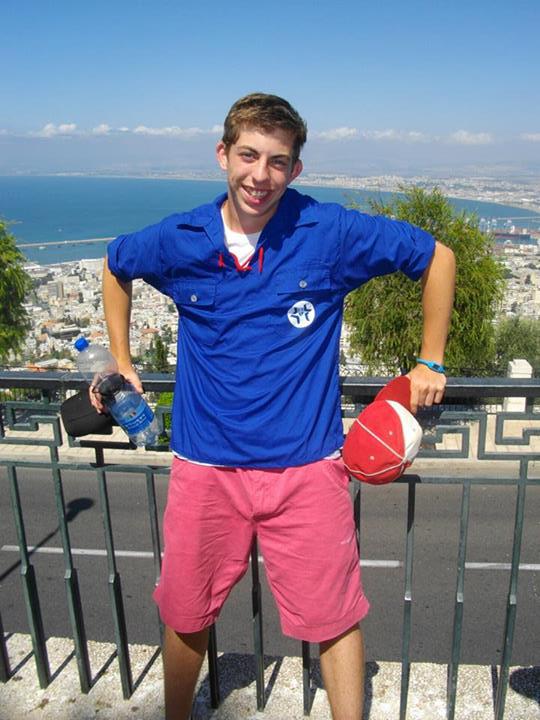My Summer in Israel
As the sun rose from the top of Masada, a mountain in Israel, it painted the Dead Sea in an array of colors. This was one of the most beautiful sights I saw on my trip, and this was only on the fourth day.
This summer, I spent six weeks in Israel as a member of a Jewish youth movement called Habonim Dror North America. Habonim Dror is a worldwide youth movement that gives Jewish teens a chance to grow up in an environment that promotes growth and learning, while also having fun and creating lifelong friendships. Habonim Dror was created in 1982, however the two movements it is a combination of have been around since the early 1920’s. It is based around the Jewish religion, along with other values of social justice and actualization (acting on your own beliefs).
I have been a member of this movement and have attended its North American summer camps since I was 10 years old, so it was only natural for me to take my first trip to Israel with this group of 113 rising 11th graders who make up my national kvutsa (age group), and who are all a part of the same movement.
During my summer I rode a camel, crawled through caves, rafted across the Kinneret (the largest body of freshwater in Israel) and much more, along with doing general touristy things that one can do in Israel, and other not so normal things. We did many things that related to our movement specifically, and were set around finding our “Jewish identity” and learning more about ourselves and each other.
At the start of my trip I spent a week in the desert getting accustomed to the heat of a country in the Middle East, learning about the geography and history of the country, and getting to know the other 112 people that I would be spending my summer with. We traveled to a Bedouin tent, where we rode camels and donkeys; and got to experience a culture that is entirely different than ours. The very next day, we climbed the Masada mountain and swam in the lowest point in the world, which happens to be the Dead Sea.
After our time in the desert, we traveled to Jerusalem, Israel’s capital, and a holy city for the jewish religion, and others. While in Jerusalem, we visited the Western Wall of the Old Temple, and discussed the Arab-Israeli conflict. The different conversations that we had provided a pensive atmosphere for many of us, including myself, to question our own Judaism and our connection to Israel.
The next leg of my trip took up a very relaxing week on the banks of the Kineret, Israel’s largest body of freshwater.
My small group of 18 spent a week at Degania Bet. Degania was one of the first kibbutzim (labor based settlements in Israel) ever established. It was established by members of the second Aliyah (mass exodus of a group of Jews to the land of Israel), some of which, were members of my youth movement. During this week, we visited another kibbutz, Kibbutz Ravid, that was established by our Israeli sister movement HaNoar HaOved, and we rafted down the Jordan River.
After our time at Degania, we visited Tzfat, another holy Jewish city, and Tel Hai, a settlement in Northern Israel where an early battle in the Arab-Israeli conflict took place. At Tel Hai, we learned about the role that members of our movement played in this battle, and the outcome of the fighting.
The next part of the trip, Rafsodia (Hebrew for “raft”), was by far the most fun. Over the course of the next two days, we built multiple rafts out of bamboo, barrells, and rope. These rafts, once equipped with a mast, a sail and a rudder, then carried us across the Kinneret. This was a very big moment for us, and it was a time when all of us really became closer as a group.
With this incredible success behind us, we then went back to touring. We travelled from the Kinneret to Tel Aviv (a large city in Israel), where we spent the afternoon in a shuk, an Israeli marketplace, bargaining for things and eating local food such as falafel and shawarma. In the Israeli shuk it is acceptable to bargain for your goods because it is a large part of their culture. At the end of our time in the shuk, we visited Independence Hall, which is the building where Israel’s independence was officially instated.
The next day, we visited Yad Vashem, the Israeli Holocaust Museum, and Har Herzl, the grave of Theodor Herzl. Herzl is credited as the founder of modern political Zionism (the belief that Jews have a right of a homeland in the Land of Israel), which is one of the five pillars that my movement is based on.
Yad Vashem was the first Holocaust museum ever, and it is also one of the most informative and emotional museums that I have been to. It is set up in a way that moves you through the museum in a chronological order from before the Holocaust to its aftereffects. The museum is also designed so that when we walked in, the air around us got colder, the light got darker and the only real daylight we could see was the light all the way at the other end of the museum. The floor also turned from carpet to cement, to symbolize the transition from before WWII to during, it is an attempt to let the people entering feel a recreation of how quickly the Holocaust was thrust upon the world.
The next few days were more light-hearted and fun. We spent time at the beach, and hung out with our friends. After this, we went to another Kibbutz and spent the weekend with members of our sister movement learning about their culture and the way they run their movement. It was very interesting to learn about the differences between our two movements, however, it was somewhat strange being rushed into this situation where they expected us to interact well with these people that we had never met before.
After this weekend, we went to a beach owned and run by Habonim Dror and we had the opportunity to meet and interact with members of Habonim Dror from around the world. There were teens from Australia, the United Kingdom, Brazil, Uruguay, Holland, and more. This was a great time for all of us: we got to relax on the beach all day, hang out with each other, and even trade for clothing from the other countries.
The rest of our trip was dedicated to visiting Haifa and Akko (two cities in Israel), and then we spent our time different closing activities such as reflecting on our trip or talking about how we had changed as a result.
This trip has helped me learn a lot about the movement that I associate with, the religion that I identify as, and myself as a person. I have come back with a set of values not so different than when I left, just enhanced.
At the beginning of my summer I did not know what was in store for me. I did not know the other kids on the trip outside of the ones that had gone to camp with me. I did not know how my trip was going to turn out.
Now at the end of my summer and the start of a new school year, I can say that I did have one of the best summers of my life. Each and every one of those 112 teens that make up my national kvutsa (age group) have become some of my best friends.

Jarod is a senior at Annandale High School and has been with The A-Blast for four years. Aside from being the Co-Editor in Chief, Jarod also participates...









